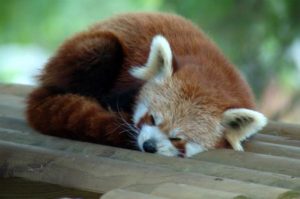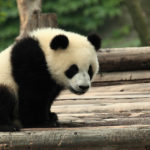Why do pandas eat bamboo ?
 Recently, scientists have been able to find an answer to the question that has occupied them for many years – why giant pandas eat bamboo if their digestive system is arranged in the same way as in predators. After all, another name for giant pandas is bamboo bears, but the diet of “bears” is 99% bamboo. In 2009, scientists made a discovery that puzzled them even more – it turns out that the pandas lack a gene responsible for the formation of enzymes in the body that promote the cleavage of cellulose found in bamboo.
Recently, scientists have been able to find an answer to the question that has occupied them for many years – why giant pandas eat bamboo if their digestive system is arranged in the same way as in predators. After all, another name for giant pandas is bamboo bears, but the diet of “bears” is 99% bamboo. In 2009, scientists made a discovery that puzzled them even more – it turns out that the pandas lack a gene responsible for the formation of enzymes in the body that promote the cleavage of cellulose found in bamboo.
How do pandas manage to live by eating one bamboo? Biologists assumed that in the digestive tract of pandas there are bacteria that help to break down cellulose, however, these bacteria were detected only after several careful studies. It turned out that the bacteria in the intestines of pandas actually resemble those of all herbivores. In total, pandas have 13 species of similar bacteria, and 7 of them are unique – other animals do not. By the way, it is because of their plant diet that pandas lead such a sedentary lifestyle – they just do not get enough energy with such nutrition.
For a day, bamboo bears can eat from 9 to 14 kilograms of bamboo, but only 17% of food is digested during digestion. It’s no wonder that the panda has the strength only to lie down and sometimes get up to find a new portion of bamboo.
However, one more question remains unclear – why did pandas prefer bamboo as the main “dish” for themselves in the course of evolution? Biological researchers from the US and China suggest that, because of their inherent laziness, the pandas simply followed the path of least resistance – if they decided to eat meat, they would have to fight for food with other predators, for example, black Asian bears. Bamboo is always plenty, and no one except pandas does not pretend to it. Pandas eat meat if they are offered it, but they will never hunt for game themselves.



























